Egg rolls. They’re the quintessential Chinese takeout food. This easy egg roll recipe is a copycat of the basic version you’ll find in takeout places and Chinese buffets, with cabbage and roast pork in the filling.
It’s been a very long time since I was regularly making them in my parents’ takeout restaurant, when we’d crank out hundreds of egg rolls at a time. With this recipe, however, we’ve recorded the ingredients and method we used, so we can make them anytime at home!
Note:
This recipe was originally published on November 10, 2014. We have since updated it with new photos, metric measurements, clearer instructions, additional details, nutrition information, and more. The recipe remains the same. Enjoy!
What Are Egg Rolls?
Egg rolls are fried, savory rolls, generally filled with cabbage, chopped Chinese roast pork, and sometimes shrimp.
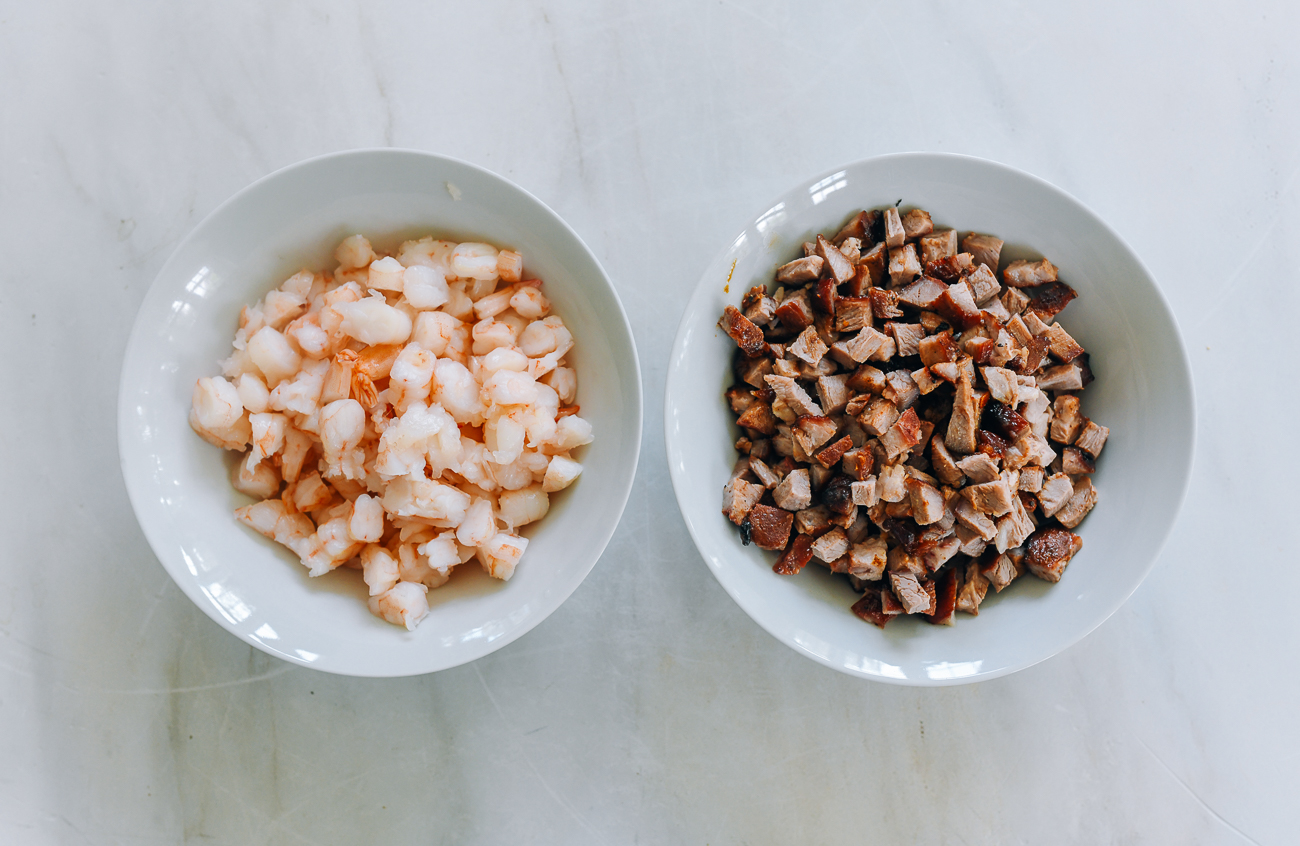

The wheat flour-based wrappers form small bubbles when fried, giving them their signature look.
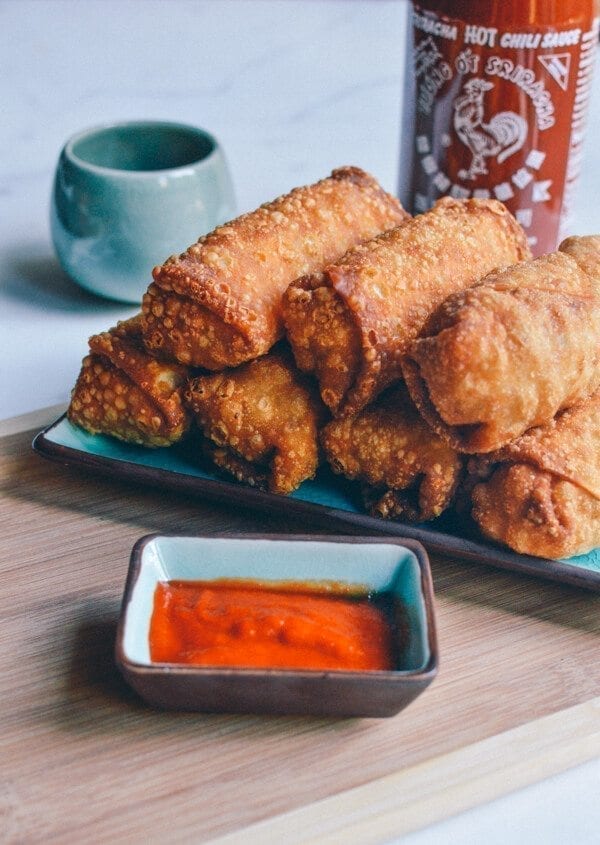

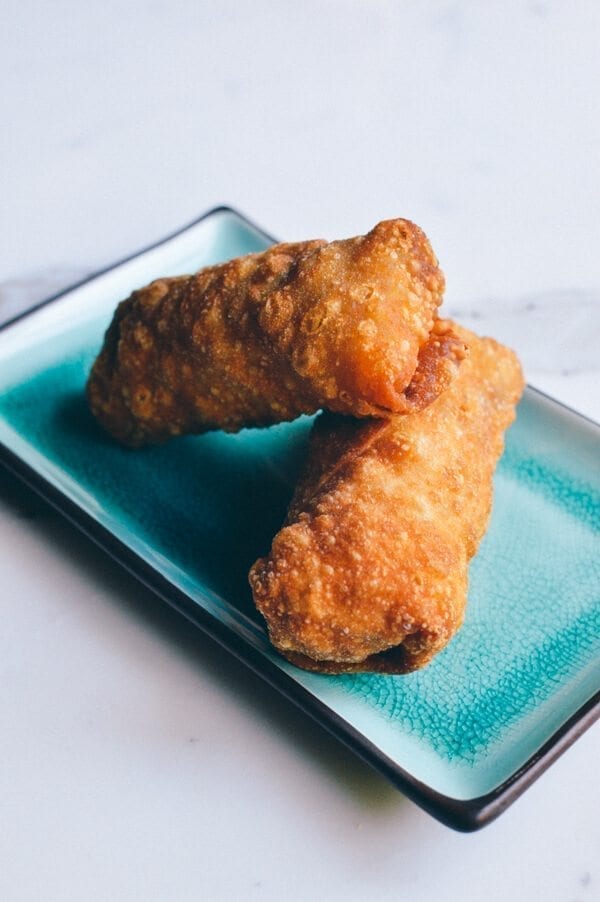



Gluten-free?
Try our Vietnamese fried spring rolls, which use rice paper wrappers instead of wheat flour based egg roll wrappers or spring roll wrappers.
It is an American creation that evolved from Chinese spring rolls (check out our Shanghai Style Spring Roll or Cantonese Spring Roll recipes to see the difference), sometime in the early 20th Century.
Contrary to the name, the filling does not actually contain egg, and there may or may not be eggs in the wrapper! Like other fried foods, they’re often served with duck sauce, a sweet condiment popular in Chinese-American takeout restaurants.
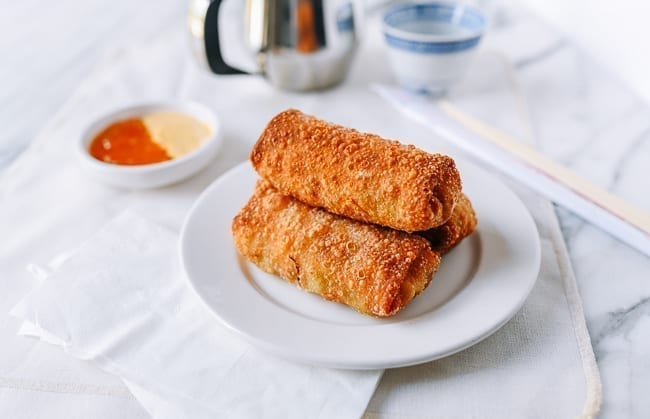

A Restaurant Recipe
I first attempted to make these beside my father, who was a Chinese chef working at the Holiday Inn restaurant in upstate New York. He later became a business owner with his own Chinese restaurant in New Jersey.
Back then, chefs and kitchen hands were judged by how many pounds of egg roll wrappers they could go through in one hour. If you were any good, you could tear through 25-30 pounds of wrappers per hour, and all the egg rolls would look like perfect little clones of each other.
I wasn’t particularly good at it (25 pounds an hour was a far off dream), but I could make them well enough. It’s a relatively easy process, and you’ll get the hang of it quickly.
While my father is no longer here to give us his exact recipe, I’ve developed this one from memory. It’s very close to what we used to make at the restaurant, both in flavor and execution!
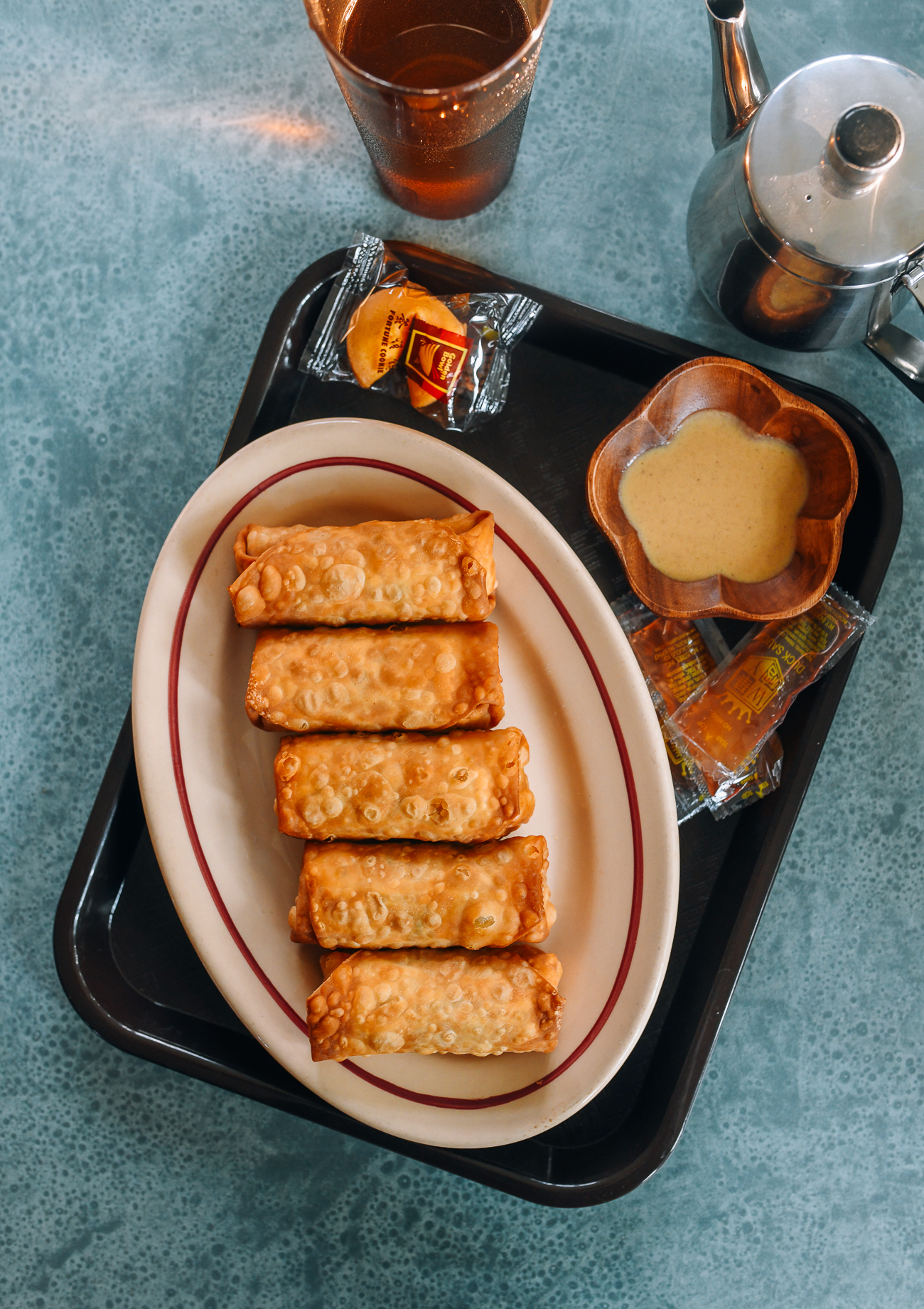

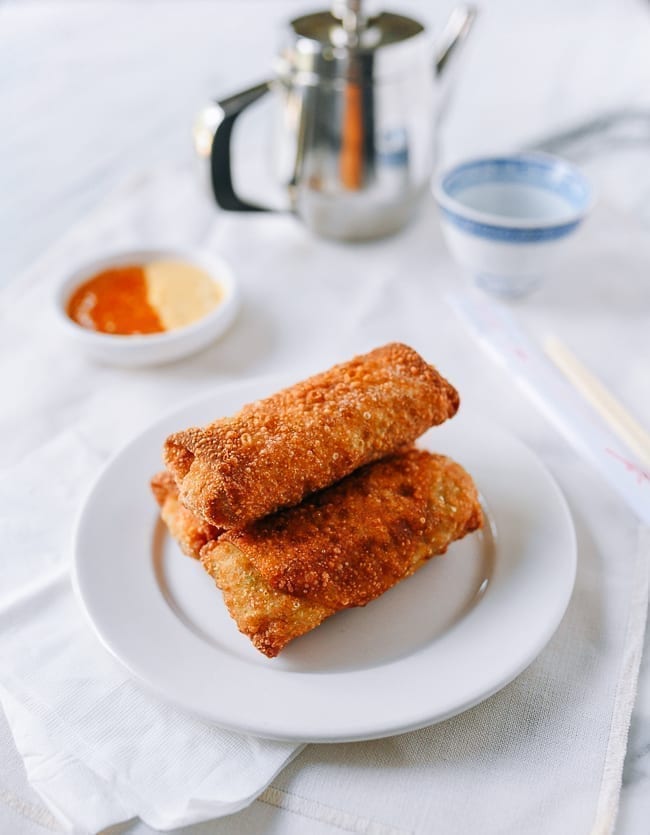

Adapting & Storing
You could use the traditional ingredients in this recipe, or get creative with just about any fresh vegetables and meat.
Just make a good-sized batch. They freeze well after frying, and reheat nicely for after school or party snacks. You can even cut the wrappers into smaller squares, and make minis for a delightful appetizer. Need I say more?
Pork-Free or meat-free Egg Rolls:
If you don’t eat pork, or you’re vegetarian, don’t worry! Of course we have you covered with two additional recipes for homemade egg rolls.
Check out our Chicken Egg Rolls and Vegetable Egg Rolls!
Egg Roll Recipe Instructions
Making the filling:
Bring a large pot of water to a boil. Put the cabbage, carrots, and celery into the boiling water and cook for about 2 minutes. Transfer the veggies to an ice bath and drain.
We prefer using Taiwanese flat cabbage for our egg rolls, since it has a crunchier, more tender texture and looser leaves. However, you can also use green cabbage, savoy cabbage, or a combination!
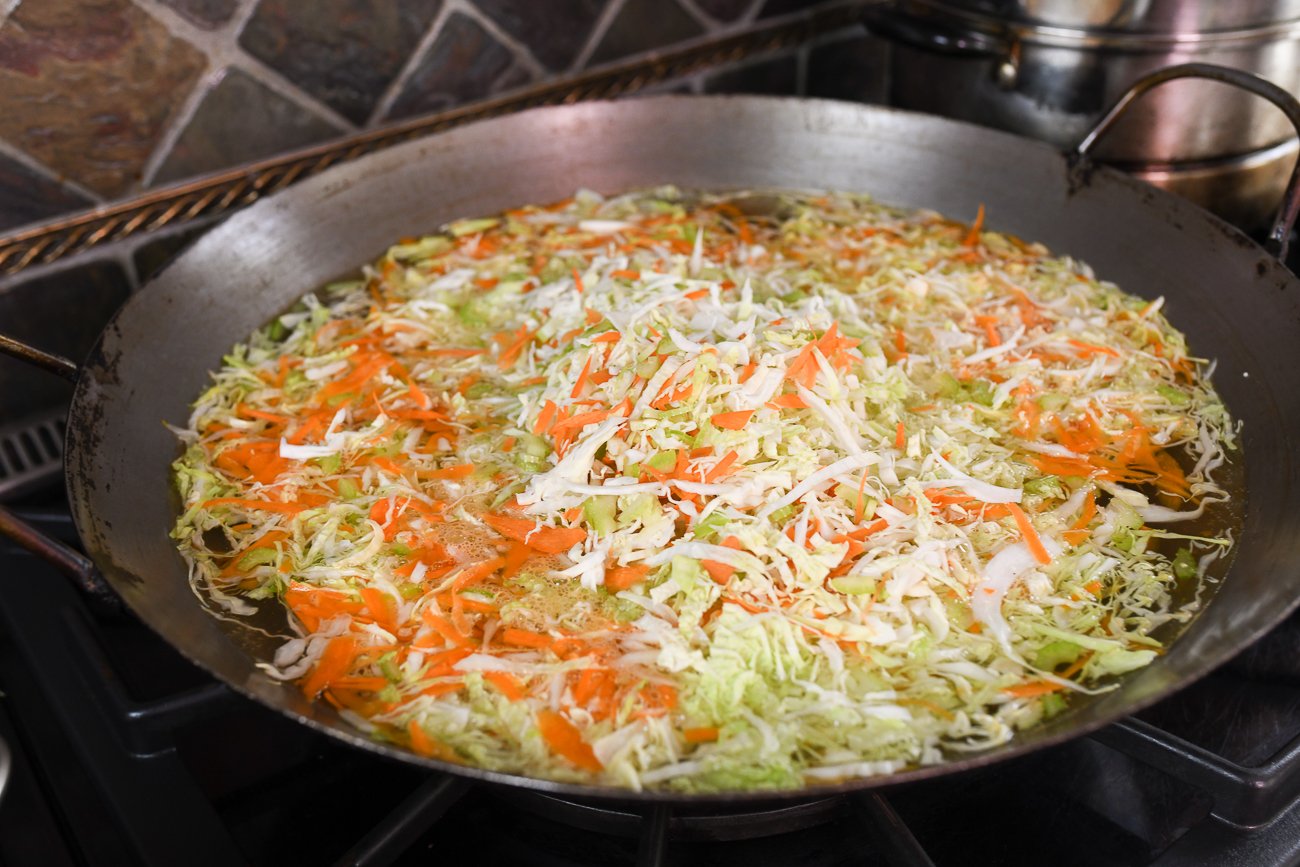

Thoroughly squeeze out all the excess water from the vegetables (you can put the drained veggies in a clean kitchen towel and squeeze out the water). This is a very important step. If the filling is too wet, you will have a wet filling and soggy egg rolls!
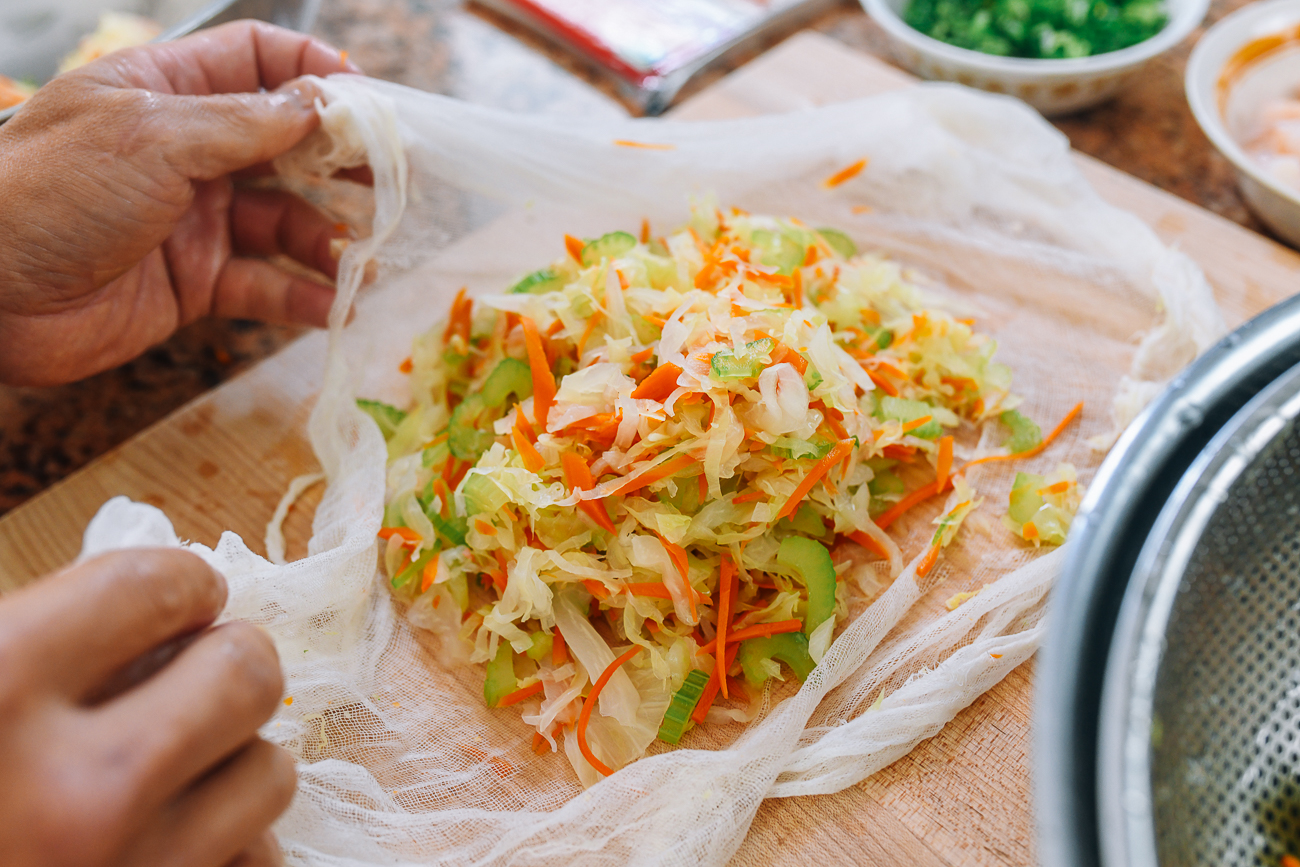

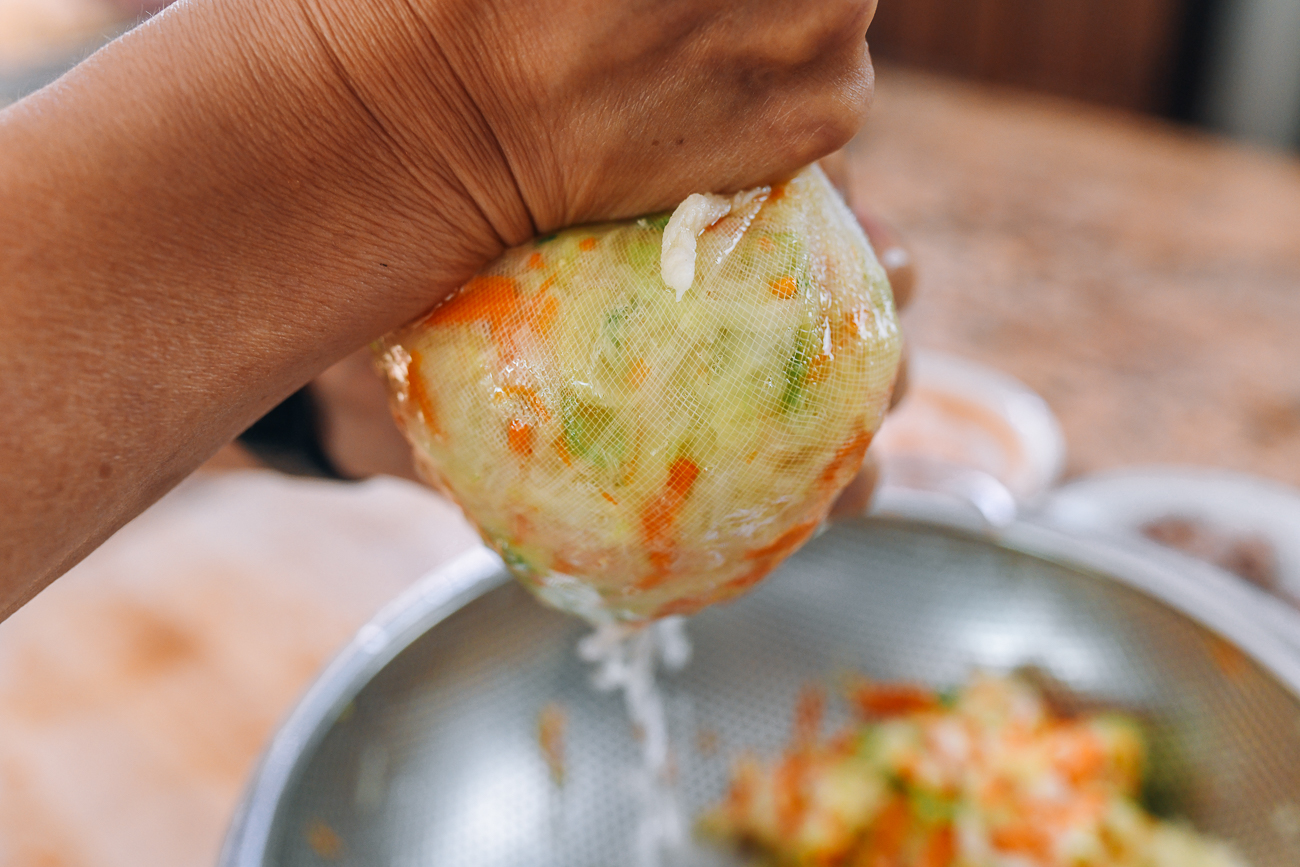

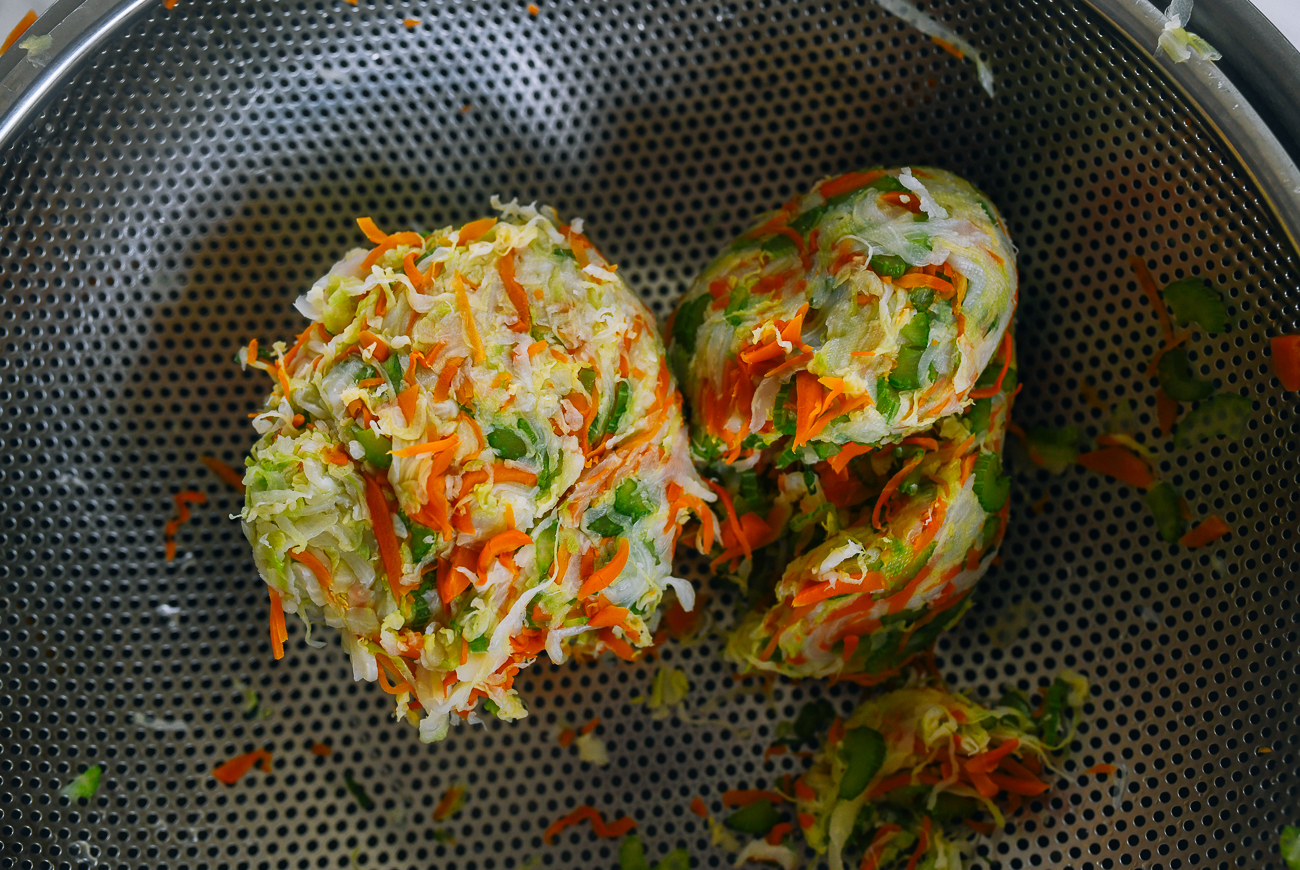

A Chinese bamboo strainer/spider really comes in handy for scooping veggies out of the boiling water and even for frying the egg rolls if you are making a large batch. Check out our Chinese Cooking tools page to see what we use in our kitchen.
When it comes to shredding the vegetables in the first place, you can use the shredding blade attachment on a food processor, or you can chop/julienne by hand. You can also try buying bulk bags of coleslaw mix if you’re short on time.
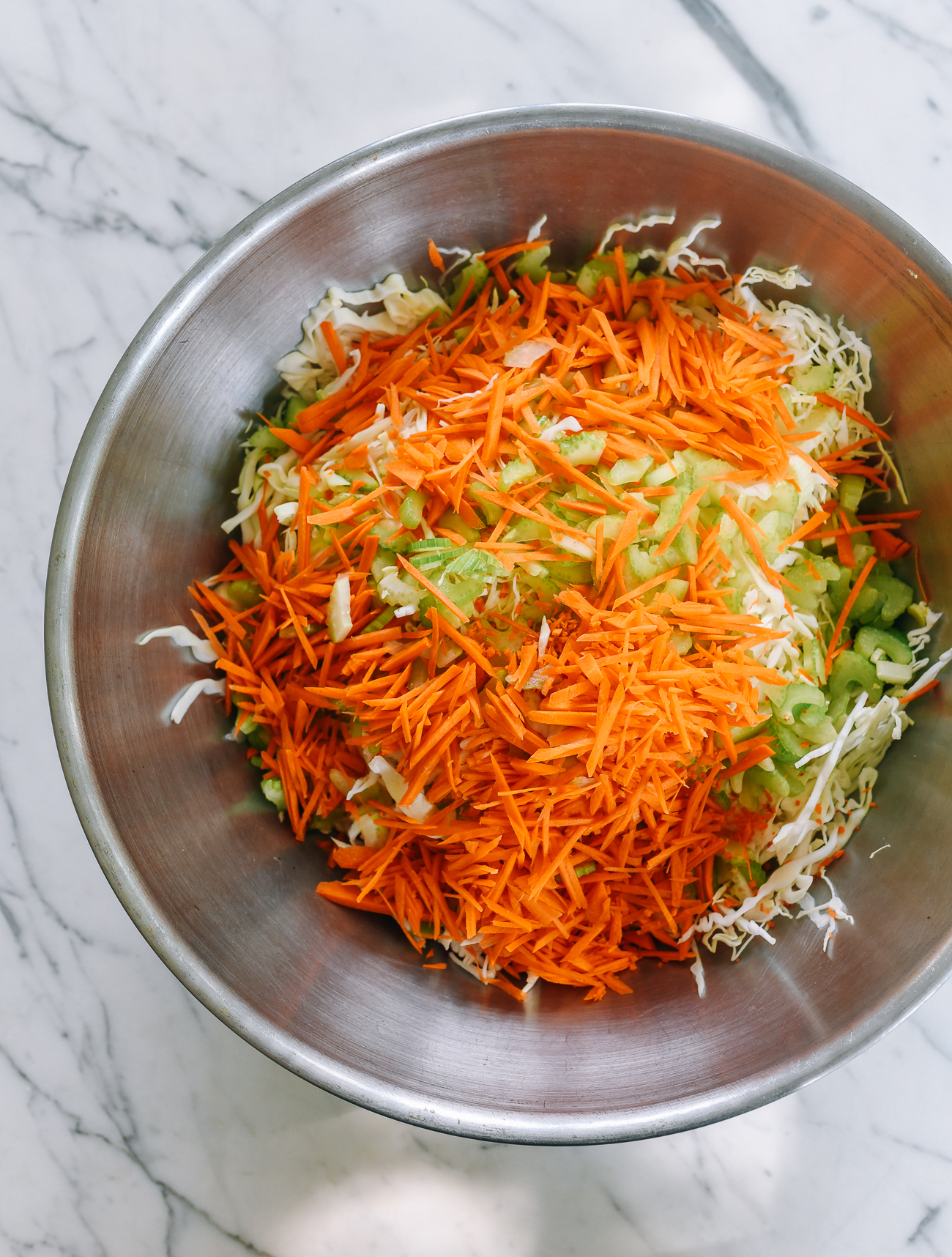

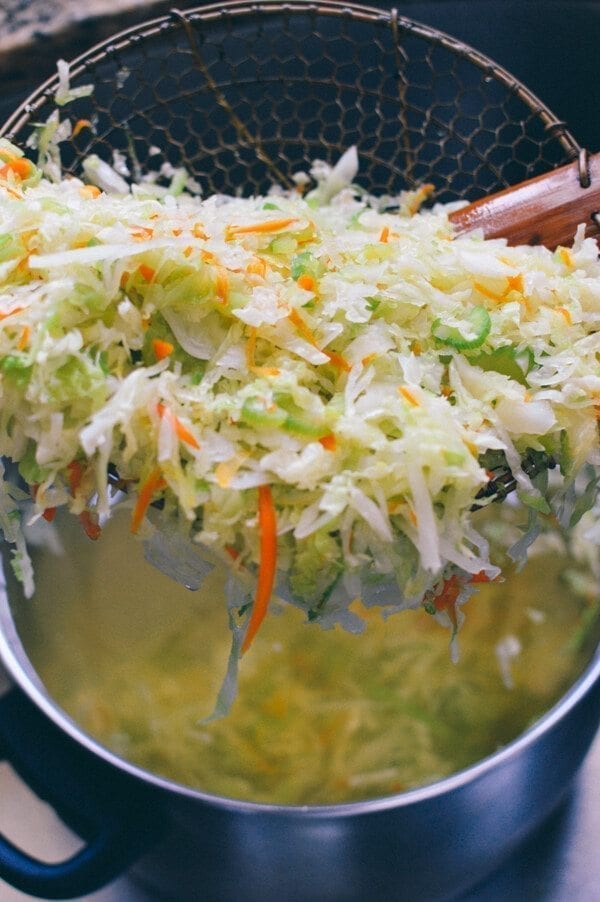

Once dry, transfer the veggies to a large mixing bowl.
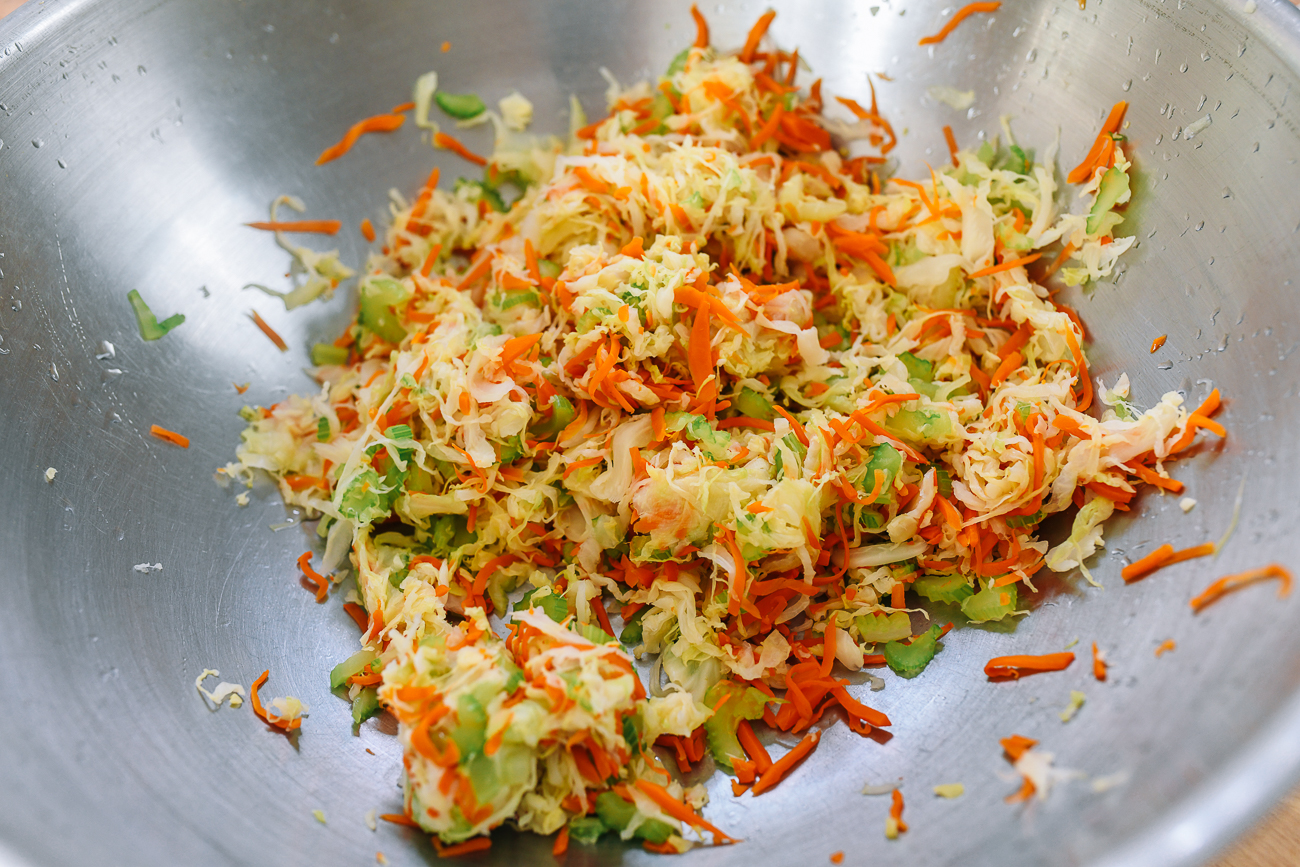

Add the scallions (green onions), salt, sugar, sesame oil, 2 tablespoons oil, five spice powder (if using), white pepper, Chinese roast pork, and cooked shrimp (if using). Toss everything together.
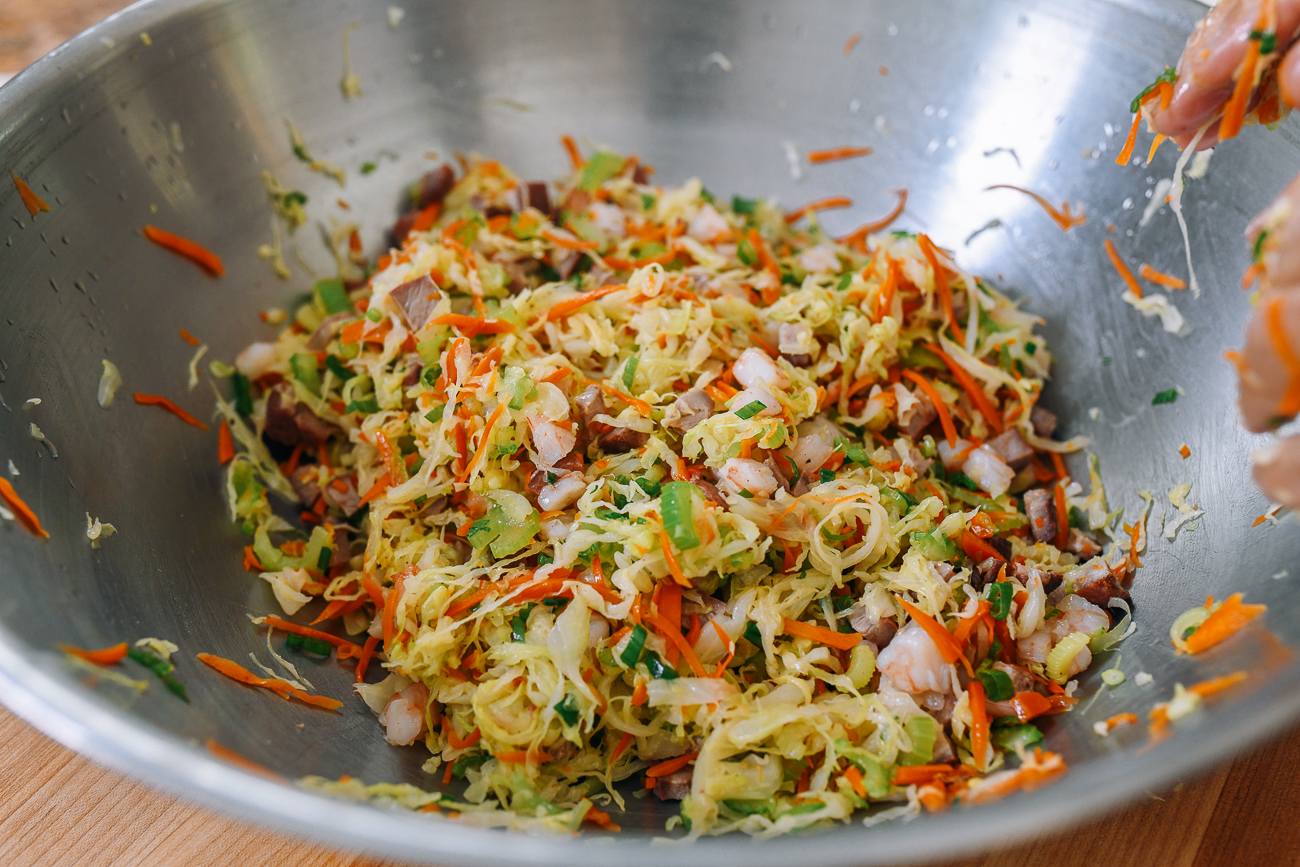

Peanut Butter?
We’ve heard from many readers over the years that their local Chinese restaurant puts peanut butter in their egg rolls! This seems to be a regional variation from the middle of the U.S., and is less common on the coasts. We certainly were hearing of it for the first time!
If you’d like to add peanut butter to your egg rolls, mix in a couple tablespoons (or to taste) before assembling.
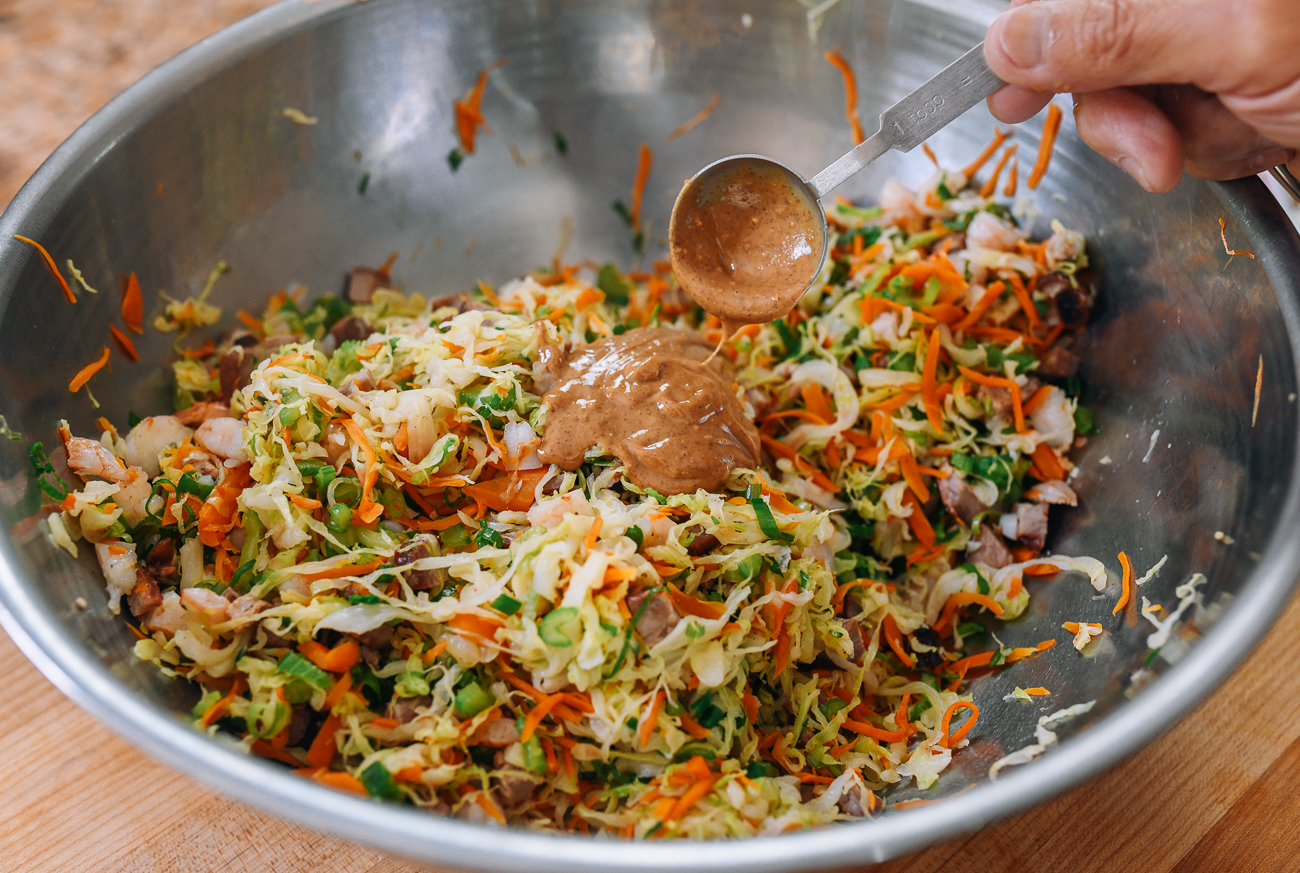

If you prefer using chicken, see our recipe for chicken egg rolls. You can also add shrimp to those if you like.
Okay, the filling is ready to be wrapped!
Tip!
One of our readers reported that his egg rolls were bland. We all have different taste preferences, and varying methods of measurement when it comes to portioning out ingredients. It’s a good idea to try the filling at this point and adjust the seasoning to taste.
As a general rule, the filling will taste a little bit more salty at this point, until it has a chance to absorb the seasonings. Remember though, you can add seasoning when you eat the egg rolls, but if they’re too salty, there is little that can be done to save the batch. Keep this in mind when re-seasoning.
You may also want to wrap a test egg roll and fry it to check the taste before you wrap the entire lot. We always did this at the restaurant before we made a batch of 600!
Back in the day, the egg roll wrappers at the restaurant used to come in 5-pound bundles. Each person would start with one and work their way down the stack, which made about 120 egg rolls.
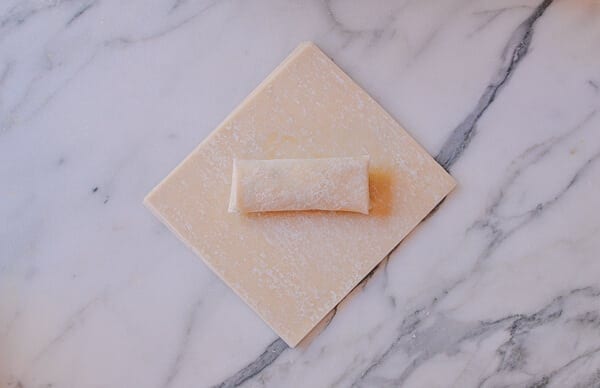

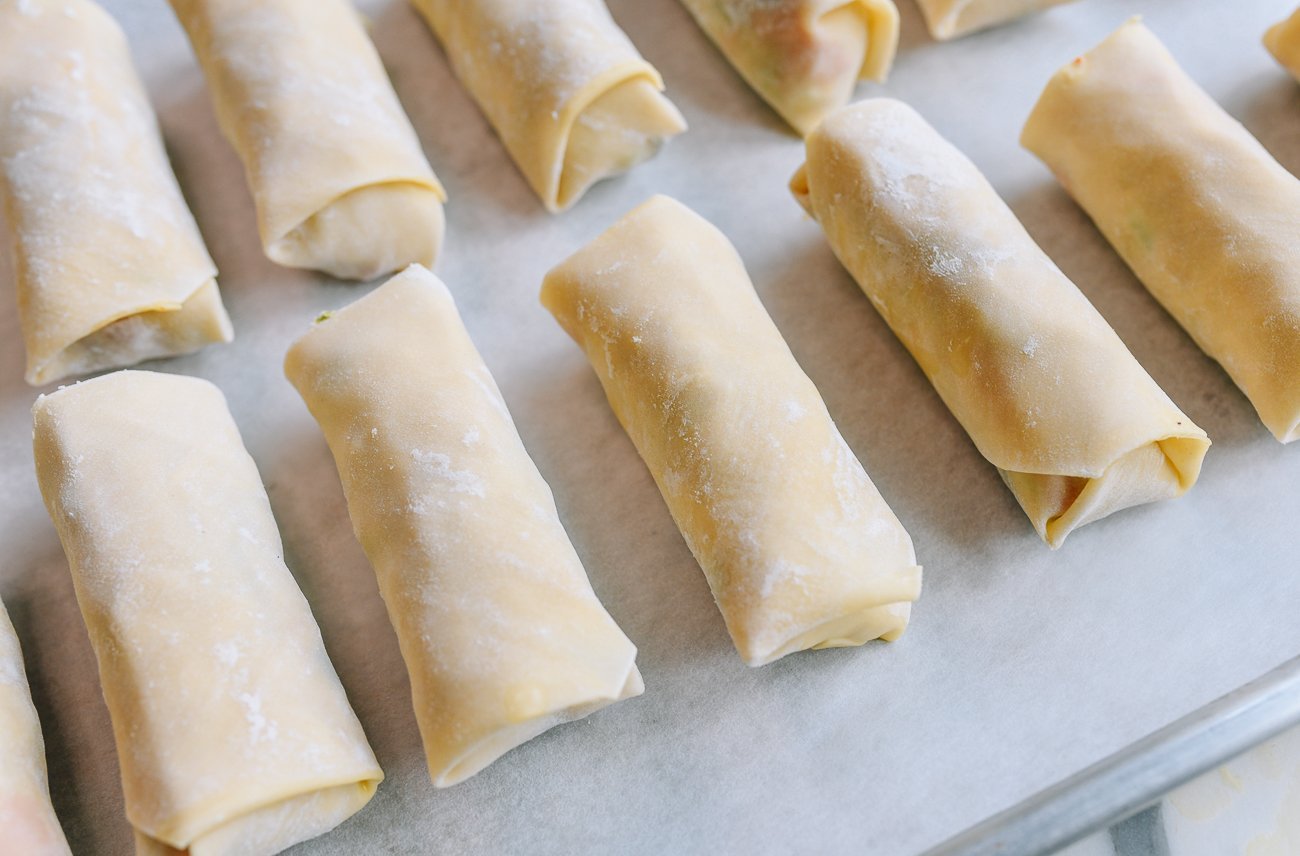

We were pretty expert at making sure we had enough filling so that there’d be no leftover wrappers. It’s not an exact science, so play it by ear.
Wrapping the egg rolls:
The way to wrap these egg rolls is to first take a small fistful of filling, squeeze it a little in your hand until it is compressed together, and place it on the wrapper.
Check out the photos below to see how to wrap them.
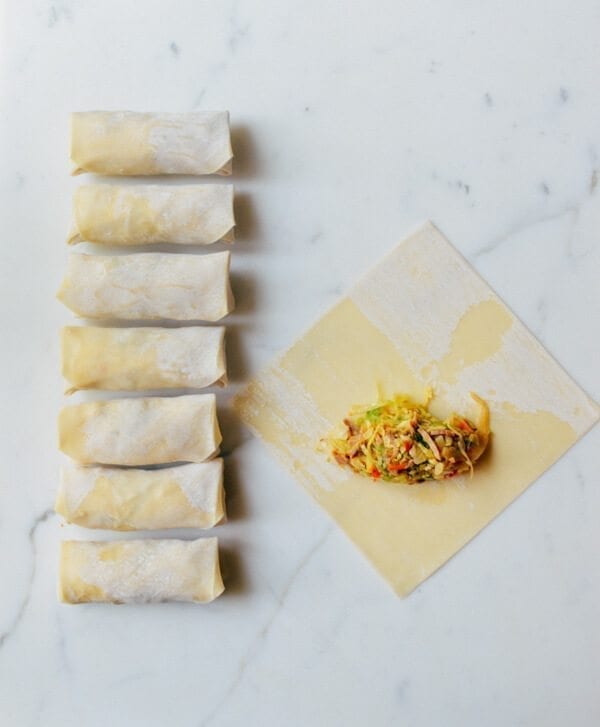



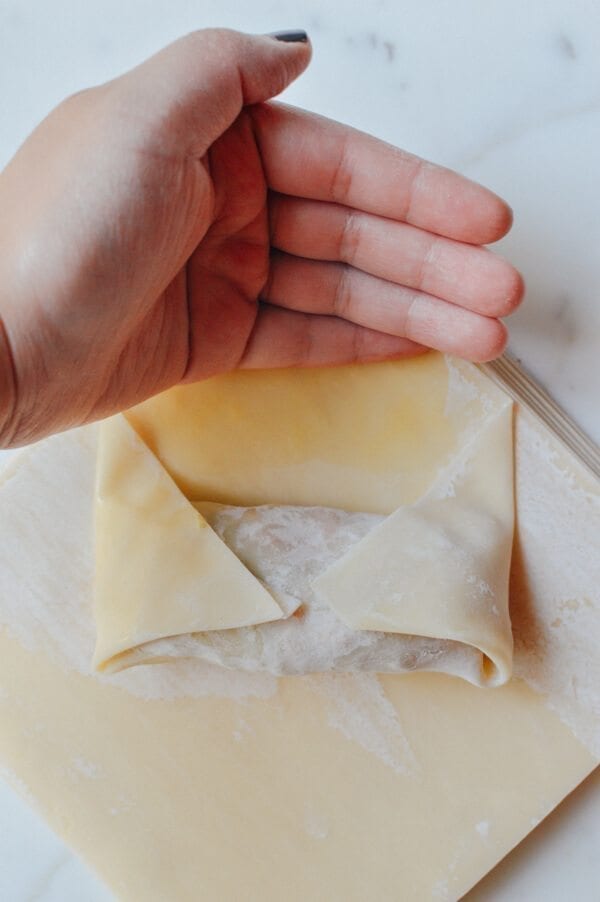

Basically, it’s similar to the method you’d use to wrap a burrito. Just add a thin layer of egg to make sure it stays sealed.
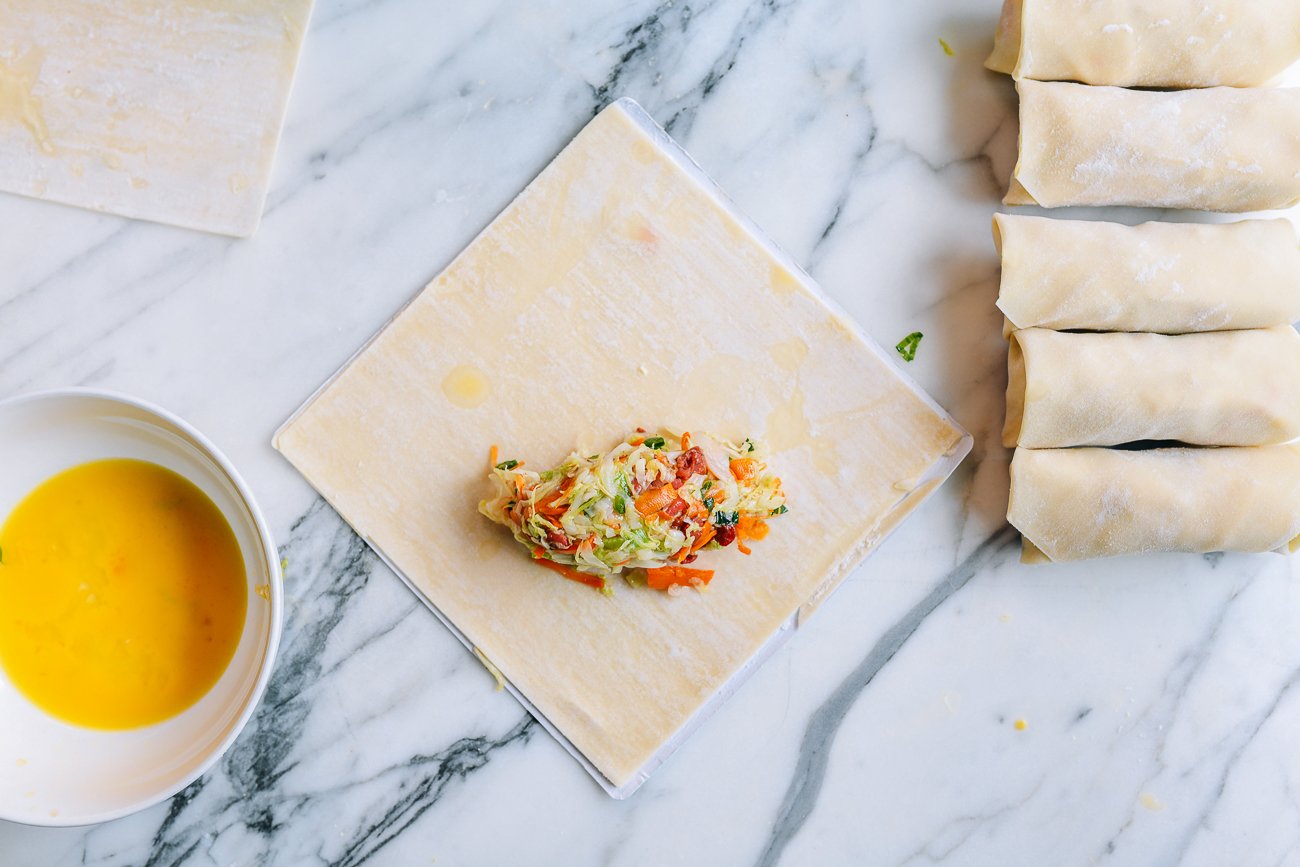

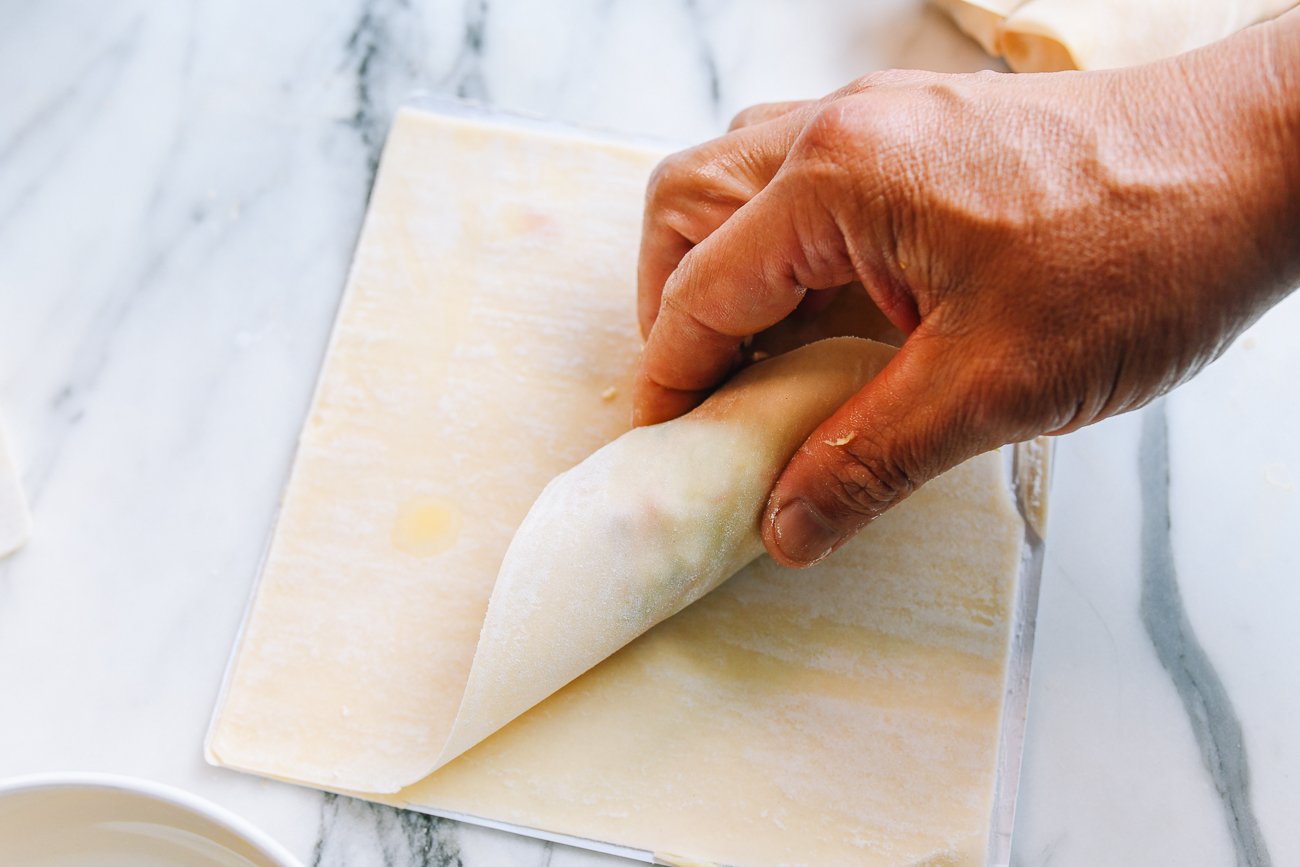



Line them up on a lightly floured surface, and continue assembling until you run out of ingredients.
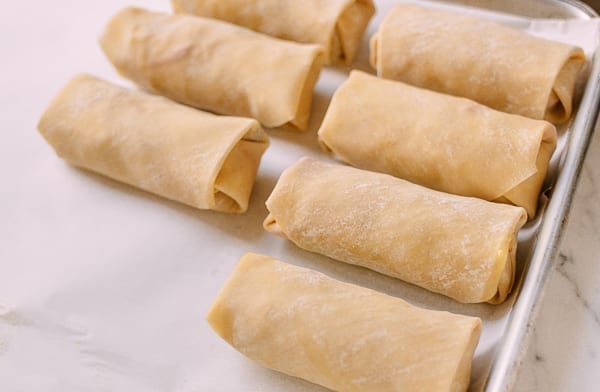

You can also watch our demonstrating the folding technique or check our article on How to Fold Egg Rolls.
Check out our Chinese Noodles and wrappers page to see more on egg roll and spring roll wrappers, as well as all kinds of noodles.
Frying the egg rolls:
In a small pot, heat your frying oil to 325 degrees Fahrenheit (160°C). You don’t need too much—just enough to submerge the egg rolls. We prefer peanut oil for frying egg rolls, but you can also use vegetable oil or canola oil.
Carefully place a couple egg rolls into the oil, and fry them for about 5 minutes until golden brown. Keep them moving in the oil to make sure they fry evenly.
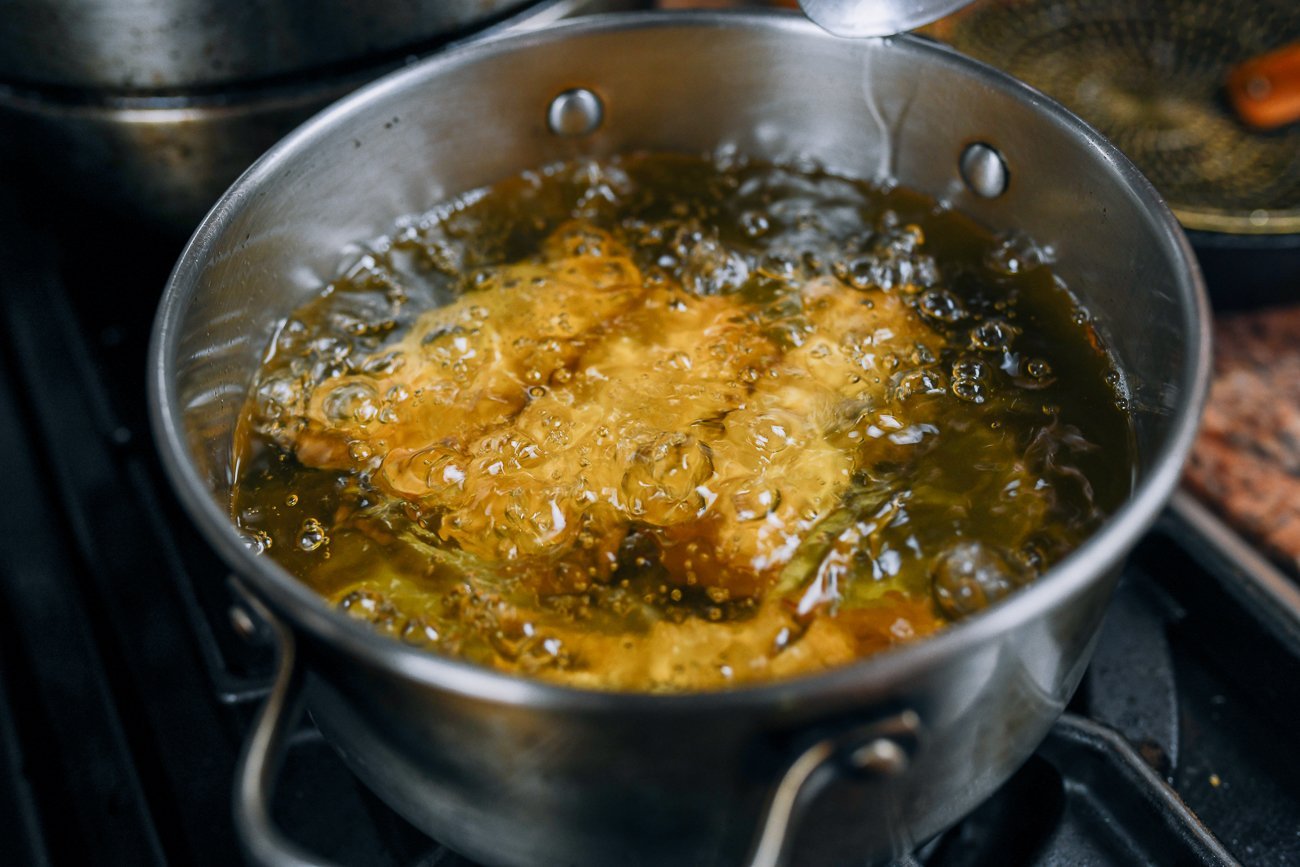



My father used to tell me that frying egg rolls was a fool-proof task. You just slide them gently into the oil, and keep them moving while they are frying. When they’re done, they’ll “call” you with a slightly louder sizzling noise.
That splattering noise is signaling that the filling is getting hot inside. The steam is escaping, causing the oil to bubble up.
After frying, you can transfer them to a cooling rack. I tend to place them in our cast iron pan lined with a paper towel, standing vertically to allow the oil to drain.
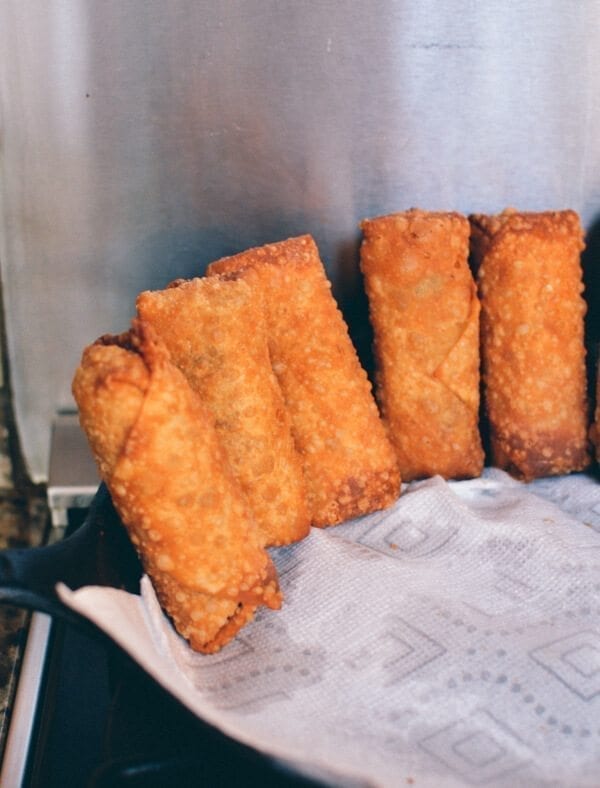

You can serve them after they’ve cooled a bit, either by themselves, or with a dipping sauce: perhaps a little duck sauce, Chinese hot mustard, sweet and sour sauce, or hot sauce.
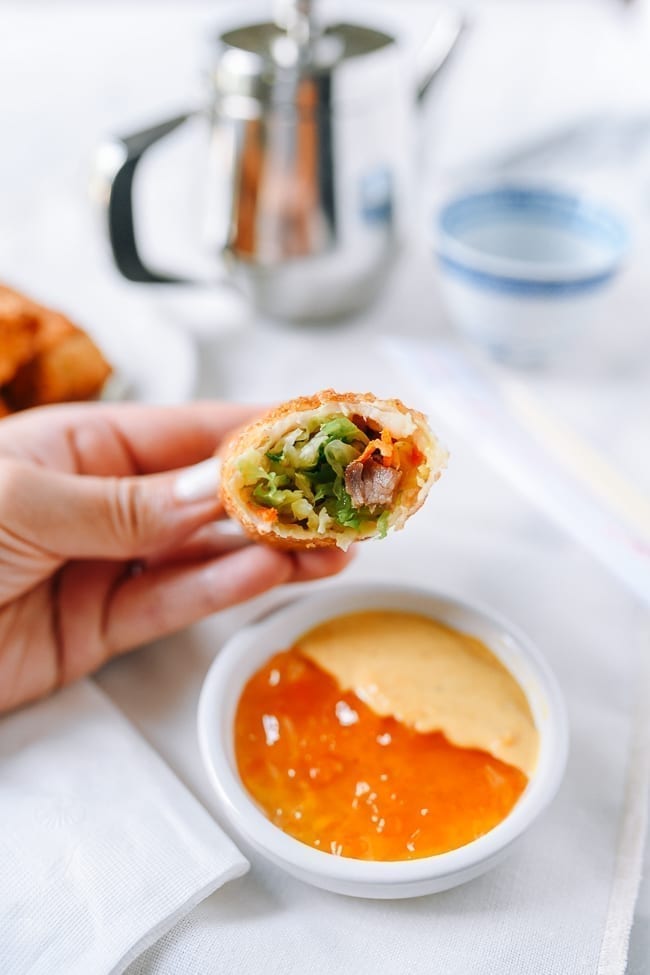

Storage & Reheating Tips
You can store leftover egg rolls in the refrigerator for up to 4 days. you can also make a big batch and freeze the egg rolls either in freezer bags or an airtight container.
Bake to reheat them at 350°F/175°C—either in the oven or air fryer—until crispy. Enjoy folks!
Copycat Takeout Egg Rolls
Egg rolls are the quintessential Chinese takeout food. Here’s our family’s restaurant recipe—a 100% accurate, easy-to-follow egg roll recipe to make at home!


serves: 24
Prep: 1 hour 30 minutes
Cook: 30 minutes
Total: 2 hours
Instructions
-
Bring a large pot of water to a boil. Put the cabbage, carrots, and celery into the boiling water and cook for about 2 minutes. Transfer the veggies to an ice bath and drain. Thoroughly squeeze out all the excess water from the vegetables (you can put the drained veggies in a clean kitchen towel and squeeze out the water). This is a very important step because if the filling is too wet, you will have a wet filling and soggy egg rolls!
-
Once dry, transfer the veggies to a large mixing bowl. Add the scallions, salt, sugar, sesame oil, 2 tablespoons oil, five spice powder (if using), white pepper, roast pork, and cooked shrimp (if using). Toss everything together. The filling is ready to be wrapped!
-
To wrap the egg rolls, take a small fistful of filling, squeeze it a little in your hand until it is compressed together, and place it on the wrapper. The wrapping method is similar to that of a burrito. Just add a thin layer of egg to make sure it stays sealed. Line them up on a lightly floured surface, and continue assembling until you run out of ingredients.
-
In a small pot, heat oil to 325°F/160°C. You don’t need too much—just enough to submerge the egg rolls. Carefully place a couple egg rolls into the oil, and fry them for about 5 minutes until golden brown. Keep them moving in the oil to make sure they fry evenly.
-
Cool slightly and serve! Freeze leftovers in freezer bags and reheat them in the oven at 350°F/175°C, until crispy.
Tips & Notes:
Makes about 2 dozen.
nutrition facts
Calories: 186kcal (9%) Carbohydrates: 15g (5%) Protein: 13g (26%) Fat: 8g (12%) Saturated Fat: 1g (5%) Cholesterol: 85mg (28%) Sodium: 582mg (24%) Potassium: 269mg (8%) Fiber: 2g (8%) Sugar: 2g (2%) Vitamin A: 2105IU (42%) Vitamin C: 18mg (22%) Calcium: 73mg (7%) Iron: 1.6mg (9%)

